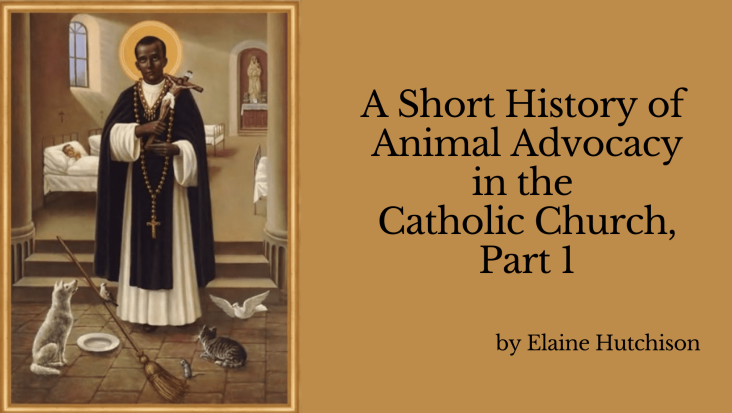posted December 12, 2022
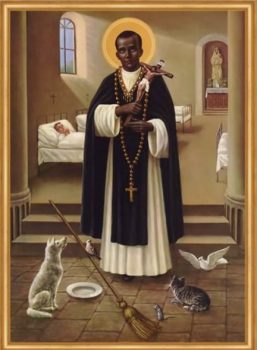
The modern definition of advocacy is “public support for or recommendation of a particular cause or policy.” In the past it had other meanings. In Old French, it was “the act of pleading for, supporting, or recommending,” and in Middle English, the meaning was even more profound—”one who intercedes for another,” and “protector, champion, patron.”
It’s by this last definition that we’ll find the roots of animal advocacy in the Catholic church. Although the history and contemporary face of the church have no conspicuous belief in animal advocacy, there’s a long history of many individuals within the Church who supported animals—sometimes by sacrificing their lives for them.
Early Animal Activists of the Church
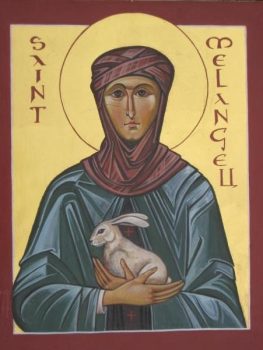
The first Catholic animal activists that we know of may not have been the actual first individuals to act in defense of animals. We know of them only because their acts were recorded and because only certain historical records were preserved through the Dark Ages.
Here are just a few of these early champions of animals—there were many more. Saint Carileff (c. 540) stopped a hunt by protecting a bull from hunters. Saint Melangell (c. 600) saved a hare from a hunter and eventually became the patron saint of rabbits and hares. Saint Godric of Finchal hid a stag from a band of hunters, and Saint Brigid of Ireland gave sanctuary to a wild boar.
Other saints, also numerous, are notable for showing mercy to less welcome creatures:
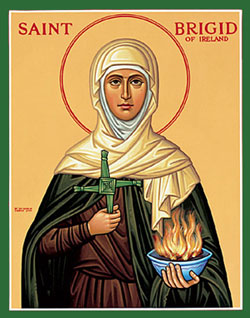
Saint Martin de Porres (c. 1579-1639) would not eat animals, nor would he use them for profit or as beasts of burden. He had an unusual compassion for the most despised creatures, believing that mice and rats behaved as scavengers because they were forced to live with so little food.
Saint Marianus (d. 473) was a shepherd monk who saved a wild boar from hunters. He also had a special talent in communicating with animals. After hearing him speak, the wolves and bears left pastures where sheep grazed, leaving the herds unharmed.
Saint Stephen of Mar Sabe (c. 710-784) extended his care to all creatures, including insects. He would save the worms he found on the ground and transport them to a place where they would be safe.
Saint Francis
Of course, there is the well-known Saint Francis (c. 1181/82-1226). Although some scholars argue that he was not an animal advocate, there are more than a few stories told by his brethren that substantiate his role as a protector of animals.
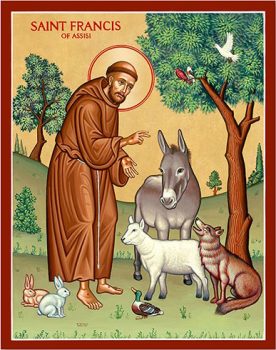
The famous story of him interceding to save a wolf that threatened the village of Gubbio is part of his legend, but there are several lesser-known stories as well. He saved rabbits from traps, paid for market sheep and freed them so they would not be slaughtered, threw fish that had been caught back into the water, and moved worms to the side of the road so they would not be stepped upon.
Although he saw God in all creation and all humans, the love he had for mankind was not a blind love. He also saw the evil in man’s treatment of animals. In his Admonitions, he writes, “Be conscious, O man, of the wondrous state in which the Lord God has placed you. He created you and formed you to the image of His beloved son—and [yet] all creatures under heaven, each according to its own nature, serve, know, and obey their Creator better than you.”
The great irony of St. Francis’s legend of animal compassion is the way it is celebrated in today’s churches, by performing a Blessing for the Animals on his feast day for animals that are almost always pets.
Francis never advocated the keeping of pets—they were not allowed in his group of monks. During his time, only rich people kept pets and because his band of monks had taken vows of poverty, he would not let them adopt the habits of the wealthy.
In contrast, the majority of the modern Blessings for Animals do not include all animals, which is how St. Francis blessed and praised them, but only animals who share our homes. Animals in fur farms, the farmed animal industry, fish hatcheries, zoos, and wild animals are usually never mentioned.
The effect that St. Francis had on the world was immense and long-lasting, but his legacy of seeing God in all beings and in all nature was lauded in The Catholic church but not practiced. And it never became doctrine.
To be continued in A Short History of Animal Advocacy in the Catholic Church, Part 2

Elaine Hutchison is a ghostwriter, author, Main Street Vegan Academy Master Vegan Lifestyle Coach and Educator, historian, and lover of the old ways. She lives on a small farm in the foothills of the Cascade Mountains where she serves as staff to her beloved animal family. Elaine’s website, Vegan History, dedicated to the history of Veganism, vegetarianism, and animal advocacy, as well as a podcast, will be launched January 31, 2024, Vegan History day.

